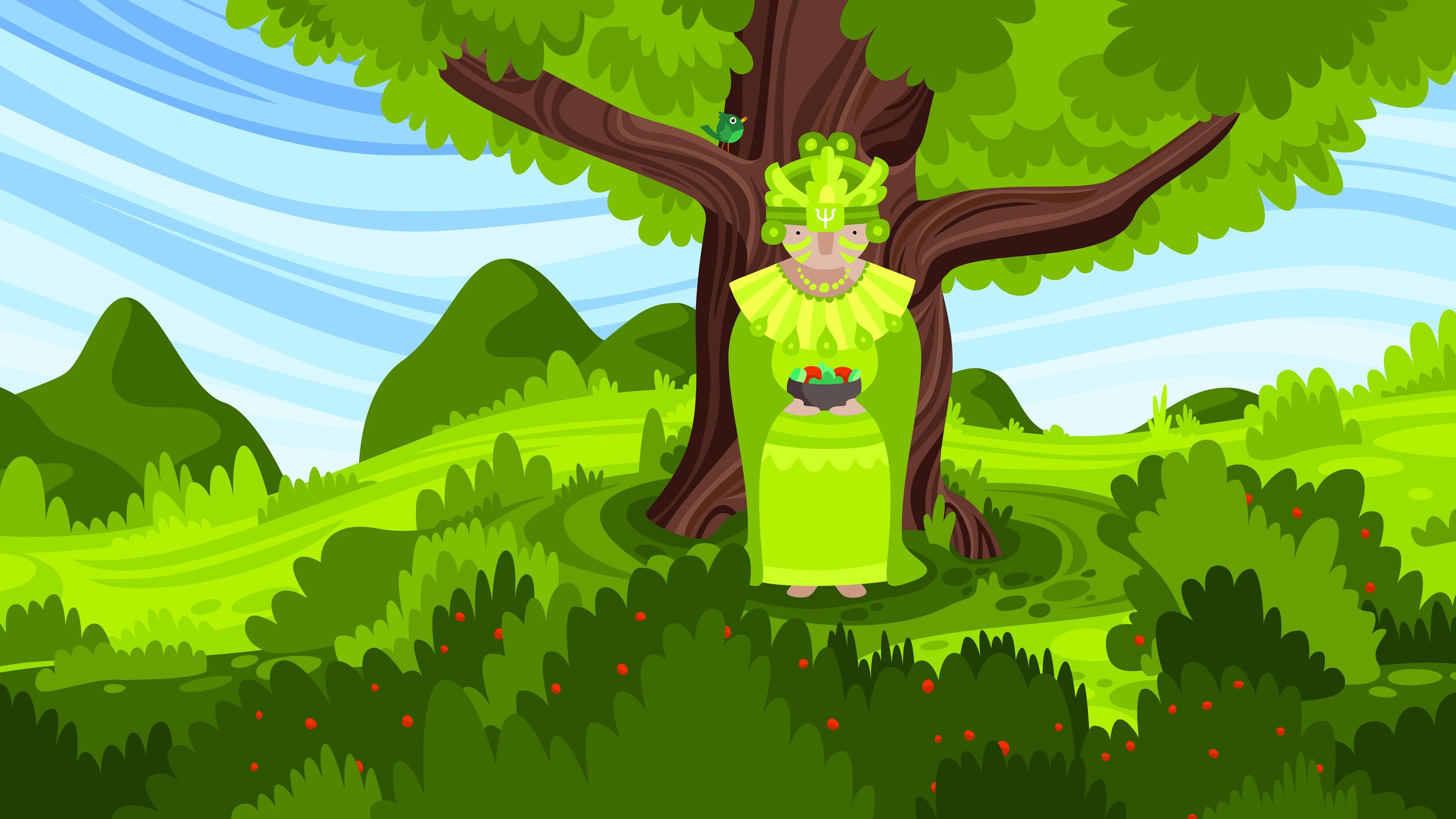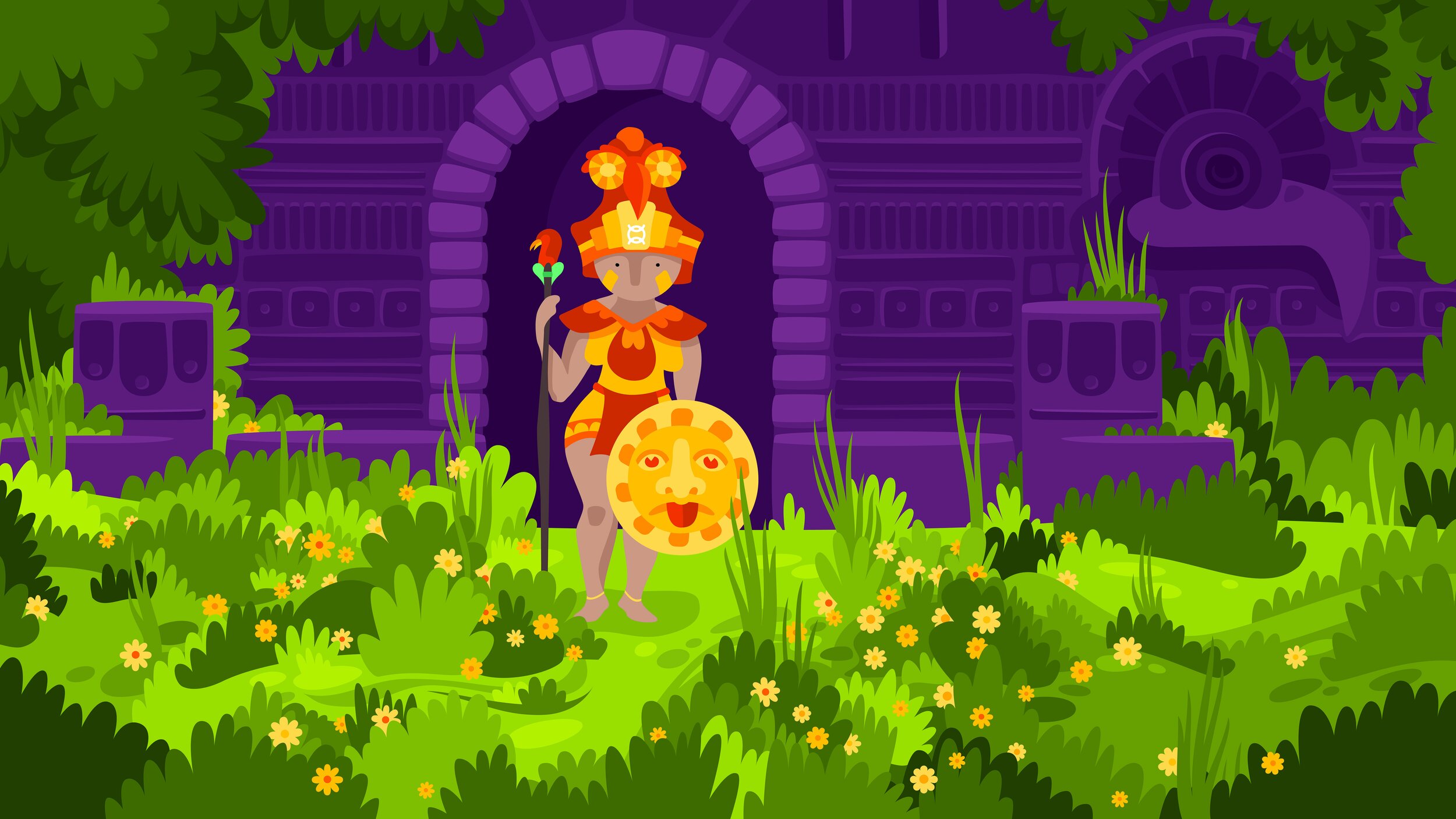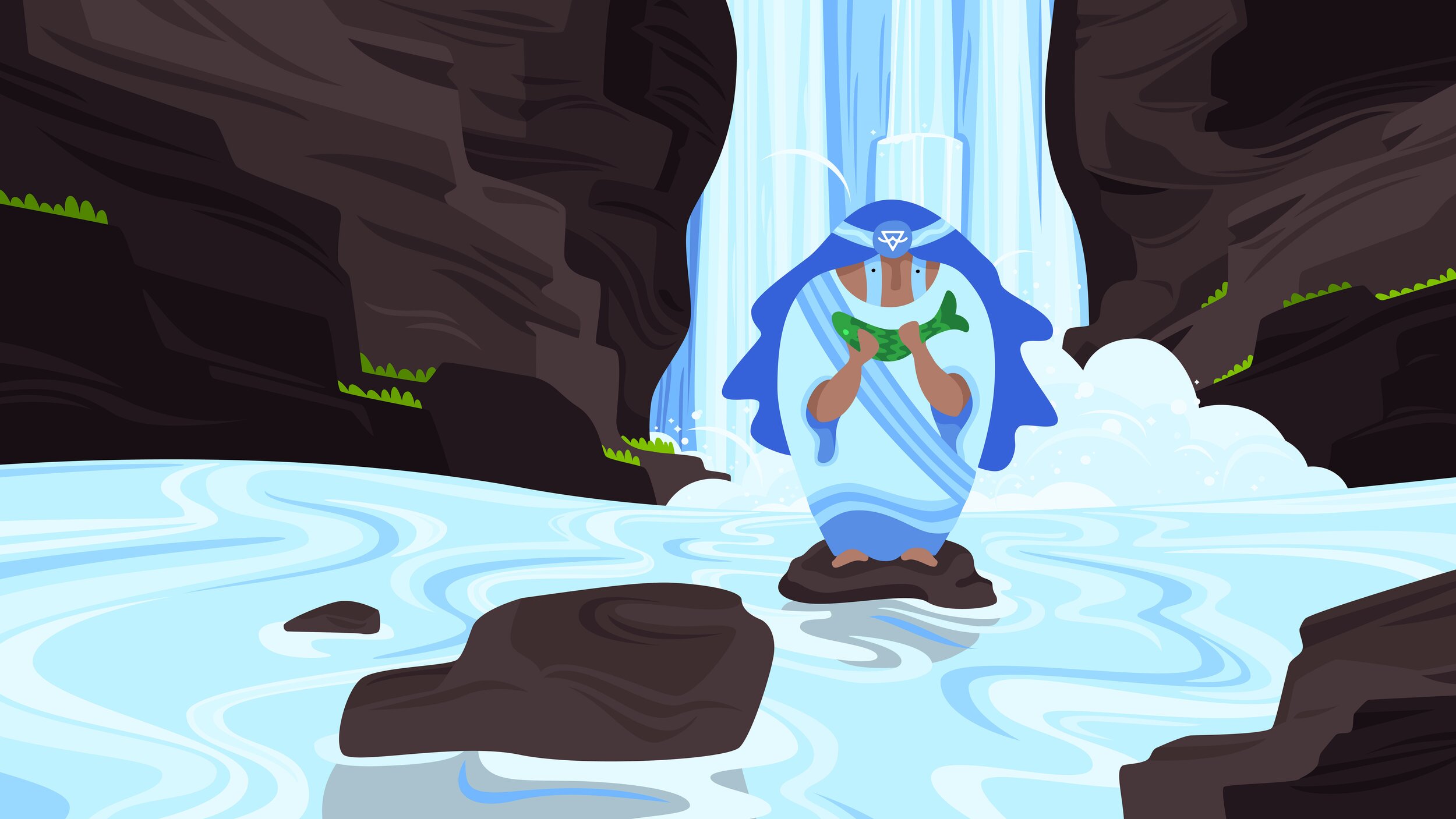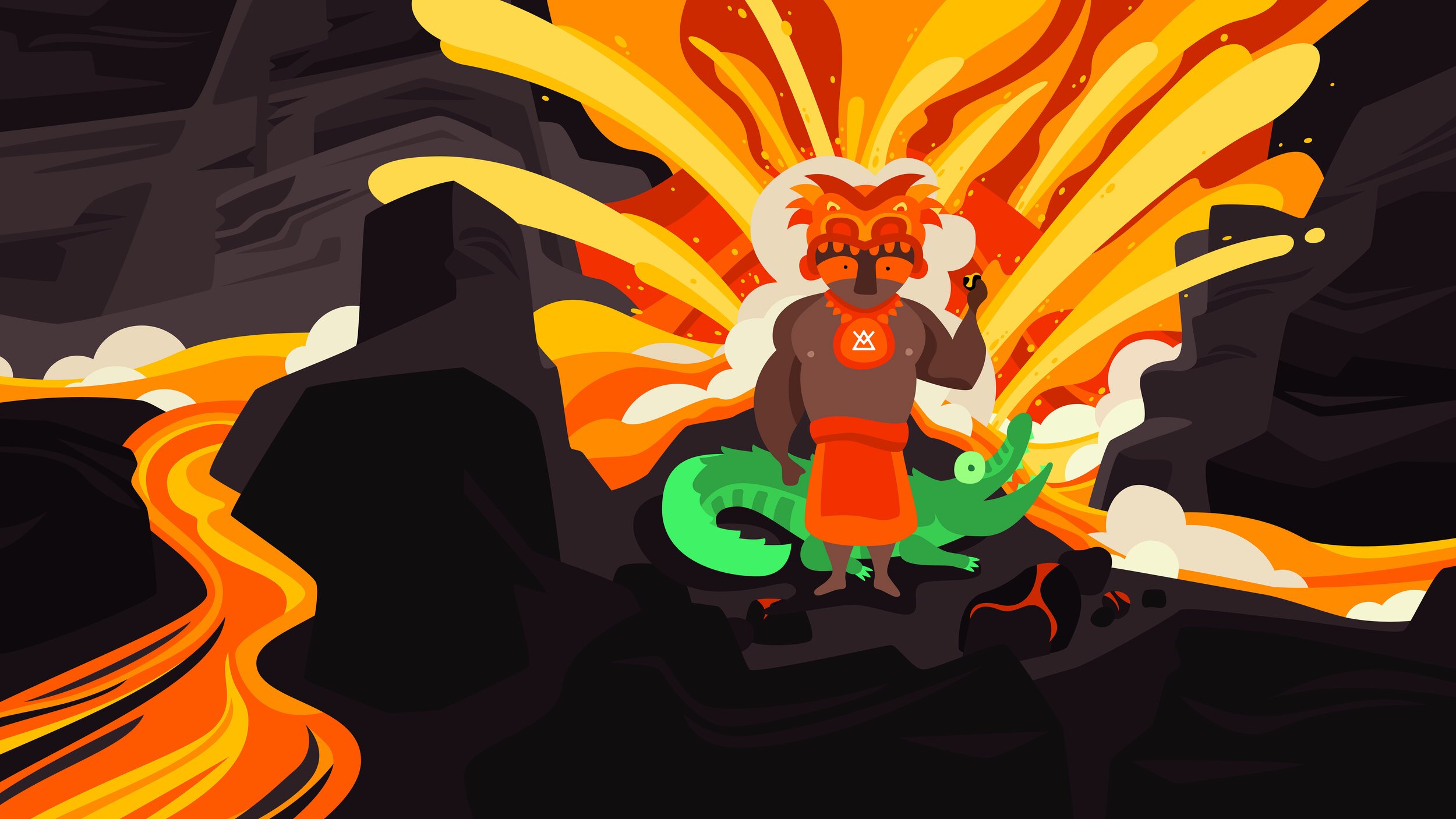Oros – First Impressions
Where to begin? Where to start?!
Oros is a wonderfully complex and spatially unique game from Brandt Brinkerhoff and Aesc Games that I didn’t even know about until last week. Jeremy Howard shouted it out to his community and I dove into the video content and promotional materials, eager to see what was happening.
And I’m glad I did. Brandt describes his game as a spatial arrangement strategy game for one to four players. A game will take about 30 minutes per player and it will involve controlling demigods who want to collide lands, erupt volcanos, make mountains, and build shrines. All of that requires the gradual rise of wisdom between the people who follow these demigods, making this an action-economy and worker-placement game that acts out as a big, tactile puzzle on the board.
It’s a mid-weight or heavyweight game and it’s coming to Kickstarter later this year.
But I don’t want to waste any more time. Let’s jump in and see what Brandt has going on in the world of Oros.
What It Does
You are a Demigod, sent from the Wise One to the four corners of the earth to bring the higher knowledge — the wisdom of the mountains — to the people scattered across the distant islands.
At your arrival, the land awakens. Tremors rumble below your feet while you watch small streams of lava slowly work their way down the rugged silhouette of a once slumbering volcano.
As a Demigod, you have the power to control the physical elements. Amazed at your abilities, a small faction of people have become your devoted Followers. Creativity, ingenuity, and a skillful hand will be required to form immovable mountains, and guide your Followers into their towering heights to build sacred sites of study.
Your Followers will grow in wisdom and knowledge with each sacred site they build. The Demigod providing the greatest knowledge will be celebrated, revered, and honored for generations throughout time as the most benevolent and generous giver of wisdom.
Think part Spirit Island but more insular. There are no invaders. Just demigods and followers. Think Carcassone but more violent, with geological and tectonic whirlwinds creating an ever-changing island space. Think Anachrony but without the time travel. The workers are getting in each other’s way rather than entering a vicious cycle of self-help.
Oros has small pieces that remind me of other games. But the implementation of the core mechanisms and the way that they interact each turn doesn’t really feel like anything else I’ve played.
Players are going to be shifting tiles, not placing them. It’s going to be a smashing of pieces (in a gentle way) that creates new land, new opportunities, and changes the face of the board.
The followers of the demigods will enable worker-placement, but each action will be blocked after use and requires you to consider the best pattern of movement.
And, don’t worry, I totally understand that I normally leave talk of mechanics for the “How It Does It” section, but Oros has struck a nerve and left me mulling over all the different threads that weave together. It’s a visually striking design with graphics that clearly delineate what players can or can’t do. And the artwork reminds me of some enchanting storybook about life, culture, and indigenous life that I would read to my children to share about far-off archipelagos and spiritual life.
What it does is so interesting to me right now. Just looking through the media kit while writing makes me want to jump back in and play again. If you’re looking for something different, something unique and satisfying with all of the strategic considerations and visual deciphering, then Oros might be a game to keep an eye on.
How It Does It
Brandt describes it as spatial arrangement. When I was playing, I was reminded of Fossilis, the excavation game from David Diaz that I played recently. Both are innovating in the genre of tile-placement. But placement isn’t happening. It’s manipulation. In Fossilis, players push tiles around the uncover what’s beneath. Here in Oros, the inverse is taking place. Each player will shift and move tiles, which never leave the board but instead collide and combine with others, moving from volcanic eruptions or hot fissures underneath the sea and ending with mountains that tower over the water. It’s building up rather than digging down.
So I’d say it’s tile-shifting, if you wanted to expand or redefine the designer’s description. It’s also a heavy strategy game that involves action-selection and worker-placement. Workers will cover up the locations that you want to use and you must always move one worker from another spot to activate the new one. But if an action space is covered already, it can’t be used. That creates a secondary puzzle outside of the main board space as players deduce how to best shift their workers around to achieve the actions they want.
Additionally, though, each action can be improved through the advancement of wisdom—which you get from returning workers from study or building sacred sites on mountains. With every wisdom bump on an action it becomes more variable and more advantageous to the player. Move three tiles in one direction orthogonally or move one tile in any direction, orthogonally or diagonally. Players can create entire strategies that use different upgraded actions from other games they’ve played.
A partial scoring track progresses the game until hitting the endgame trigger. After that, players will tally points from their unlocked actions (which can be big point values), their studying followers (if they're actively on sacred sites at the end of the game), their placement on the ascension track (which is what pushes play toward the endgame), and their sacred sites (the values of which can also be upgraded using wisdom).
It’s a mountain of variability, pun intended. And a whole host of mechanisms that flow together really smoothly.
And I haven’t even mentioned the automa system, which guides AI demigods. Each of the four demigods has a unique style of play and automa deck, which flips one card each turn and has three separate sections of fulfillment. The top banner, middle board space, and bottom banner. Complete all three and the automa turn is finished.
It’s really simple and will be a part of solo and two-player games. Three demigods are needed to fill the sacred site building pattern, so that’s why two-player games will need one automa. But the ease of use is substantial and I don’t think players will struggle with it.
Why You Might Like It
I haven’t really played anything like Oros and that’s a huge positive for many players when they can find a unique tabletop experience with a lot of meaty choices and exciting gameplay.
It involves a lot of mechanics and ideas, but the game runs smoothly and the downtime between player turns isn’t bad because the board is changing constantly so you’re always reassessing. The automas also function nicely.
Why You Might Not
It’s possible that given how much the board changes between turns that a player can suffer from analysis paralysis. I think the more you play, the easier it will be to visually identify the best moves, but the first few games might be slow.
It’s a lot of physical manipulation of the board. And information is constantly changing. So you’re processing a lot, which might not appeal to people who want a more passive play experience.
Final Thoughts
I cannot wait for this to hit Kickstarter. It deserves a lot of attention.
Sometimes, when someone talks about a game and says it’s a puzzle, it’s an abstract description and doesn’t necessarily evoke what I’m trying to suggest about Oros. This is actually a puzzle game. You can manipulate tiles in so many ways on the board. Move it off one side and slam the tiles into what’s on the opposite end of the board. It’s an island mosh-pit that exists in a vacuum of the world. And you need to figure out how to put the pieces together to best advance your demigod’s stature. But your followers are also not the wisest. You must teach them how to get out of their own way (and yours).
I played an entire game without exploring the potential of three other actions. And that doesn’t upset me. That excites me. It makes me want to do it all over again and try something out a different way.
Brandt has established the foundations—and core gameplay experience—of a truly innovative board game. I’m drawn in by the art. I’m captivated by the design. And my brain is teased and taunted by all the things that could happen.
And it’s going to be a completely different game depending on player count. Going solo will be a challenge of working against the personalities of each automa demigod, which act differently from each other and have certain goals. Playing with two players will be a contest of finding the best way to navigate a passive but unpredictable AI as well as a fierce competitor in the other human player. A four-player game? That’s going to be a slower, lava-moving, island-forming, wisdom-gathering beast of a game… which I absolutely can’t wait to play!
If you want to learn more about this game, check out Brandt’s videos on the Aesc Games YouTube channel, the game’s website, the Kickstarter notification page, or the playable version on Tabletopia.
Does Oros sound like something that will appeal to you? Have you seen gameplay mechanics like this before?
Let us know in the comments and give a recommendation for other games of which to share our first impressions.









